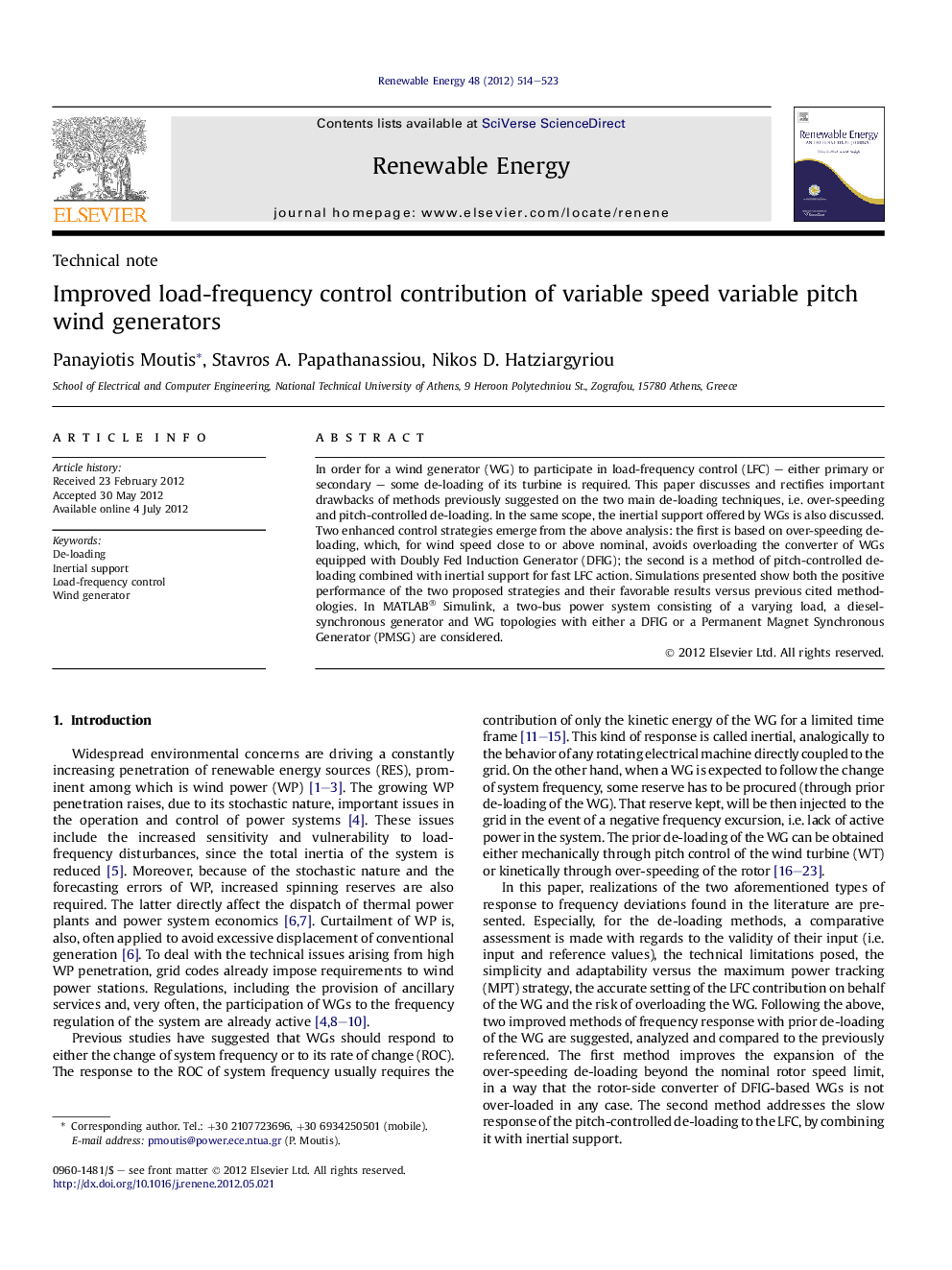| Article ID | Journal | Published Year | Pages | File Type |
|---|---|---|---|---|
| 300907 | Renewable Energy | 2012 | 10 Pages |
In order for a wind generator (WG) to participate in load-frequency control (LFC) – either primary or secondary – some de-loading of its turbine is required. This paper discusses and rectifies important drawbacks of methods previously suggested on the two main de-loading techniques, i.e. over-speeding and pitch-controlled de-loading. In the same scope, the inertial support offered by WGs is also discussed. Two enhanced control strategies emerge from the above analysis: the first is based on over-speeding de-loading, which, for wind speed close to or above nominal, avoids overloading the converter of WGs equipped with Doubly Fed Induction Generator (DFIG); the second is a method of pitch-controlled de-loading combined with inertial support for fast LFC action. Simulations presented show both the positive performance of the two proposed strategies and their favorable results versus previous cited methodologies. In MATLAB® Simulink, a two-bus power system consisting of a varying load, a diesel-synchronous generator and WG topologies with either a DFIG or a Permanent Magnet Synchronous Generator (PMSG) are considered.
► Load-frequency control contribution by wind generators has been studied. ► Previous de-loading methods and inertial support techniques have been reviewed. ► Two improved de-loading and frequency response methods are introduced. ► Both improved methods compare favorably to the hereby reviewed previous ones.
